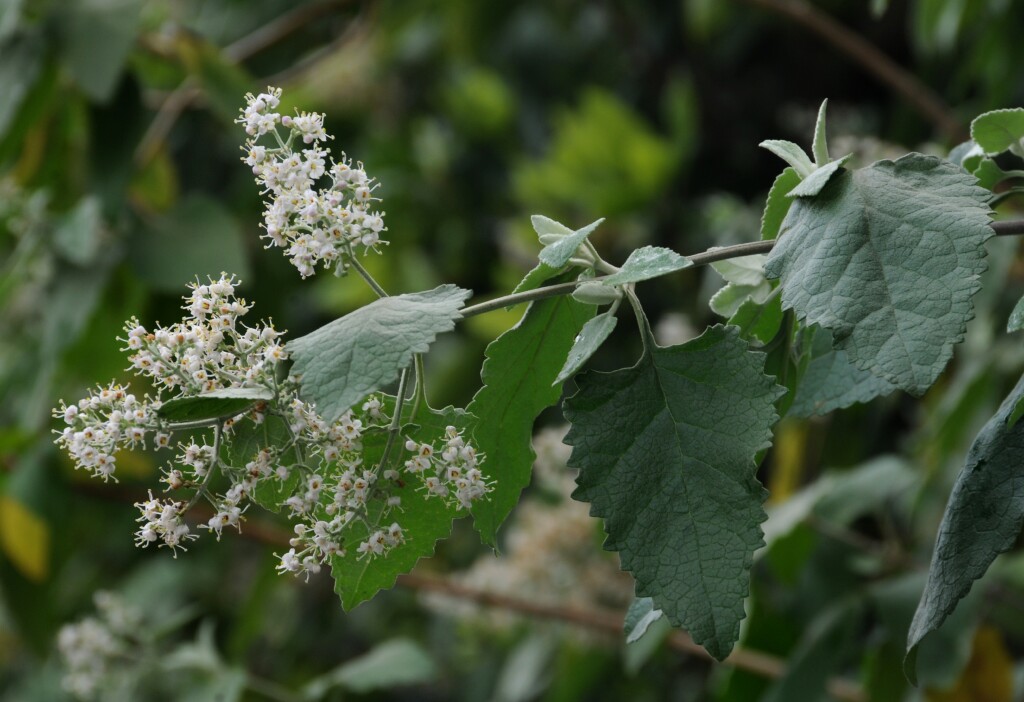Buddleja dysophylla
(Benth.) Radlk.Scrambling or climbing shrub to c. 10 m high; branches grey-tomentose when young. Leaves c. triangular to ovate, 1–10 cm long, 2.5–7.7 cm wide, truncate to subcordate at base, margins dentate to crenate, surfaces grey-pubescent, sometimes becoming glabrous above; petiole to 3 cm long. Inflorescence terminal, lax, paniculate to c. 30 cm long. Flowers shortly pedicellate; calyx 1–2 mm long, tawny or rusty-tomentose, lobes blunt, much shorter than tube; corolla white, greenish, or yellowish, with maroon throat, tube 1.5–2.5 mm long, about as long as lobes, outer surface papillose-pubescent, tube sometimes pilose, inner surface of tube glabrous; stamens inserted near corolla mouth, filaments 1–3 mm long, elongating after anthesis. Capsule 2–3.5 mm long, apiculate. Flowers Jun.–Jul.
GipP, HSF. Also naturalised WA, SA, NSW. Native to southern Africa. Formerly grown as a loose hedge or screen for fences, buildings etc., but now rather uncommon in cultivation; persisting in old gardens, naturalised to some extent in Melbourne suburbs (e.g. on rail embankments) and in wet forests near Longwarry and Ensay.
Conn, B.J. (1999). Buddlejaceae. In: Walsh, N.G.; Entwisle, T.J., Flora of Victoria Vol. 4, Cornaceae to Asteraceae, pp. 475–476. Inkata Press, Melbourne.
 Spinning
Spinning




